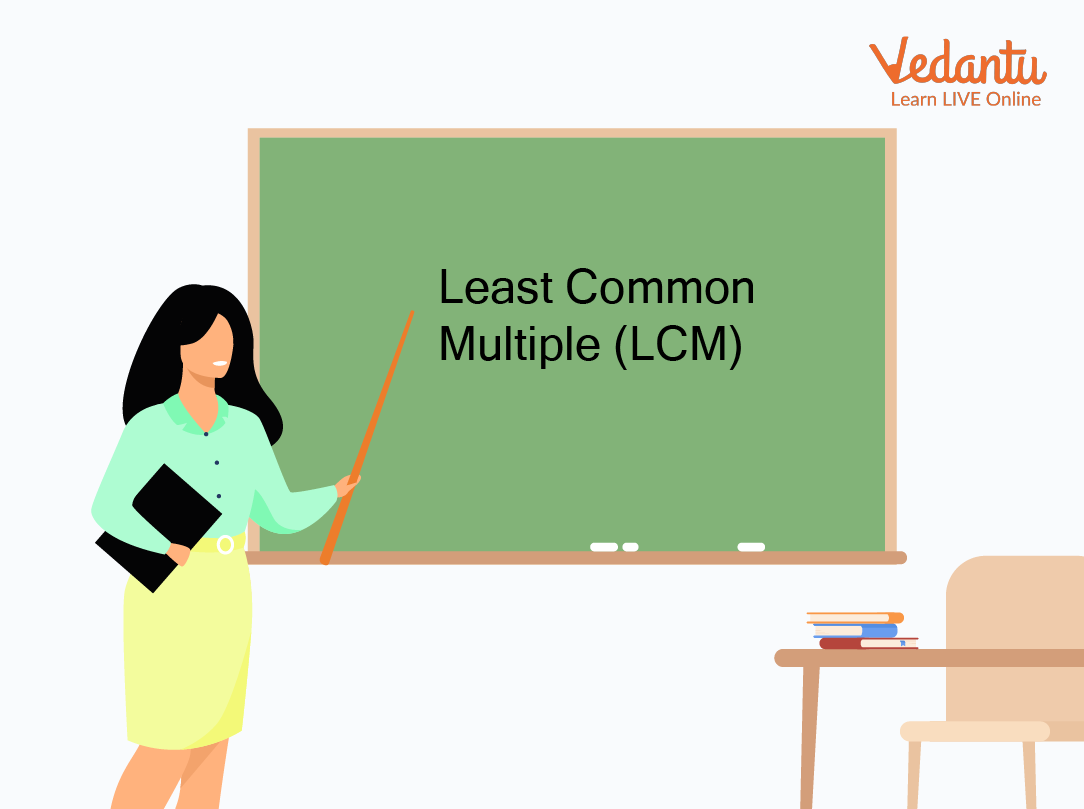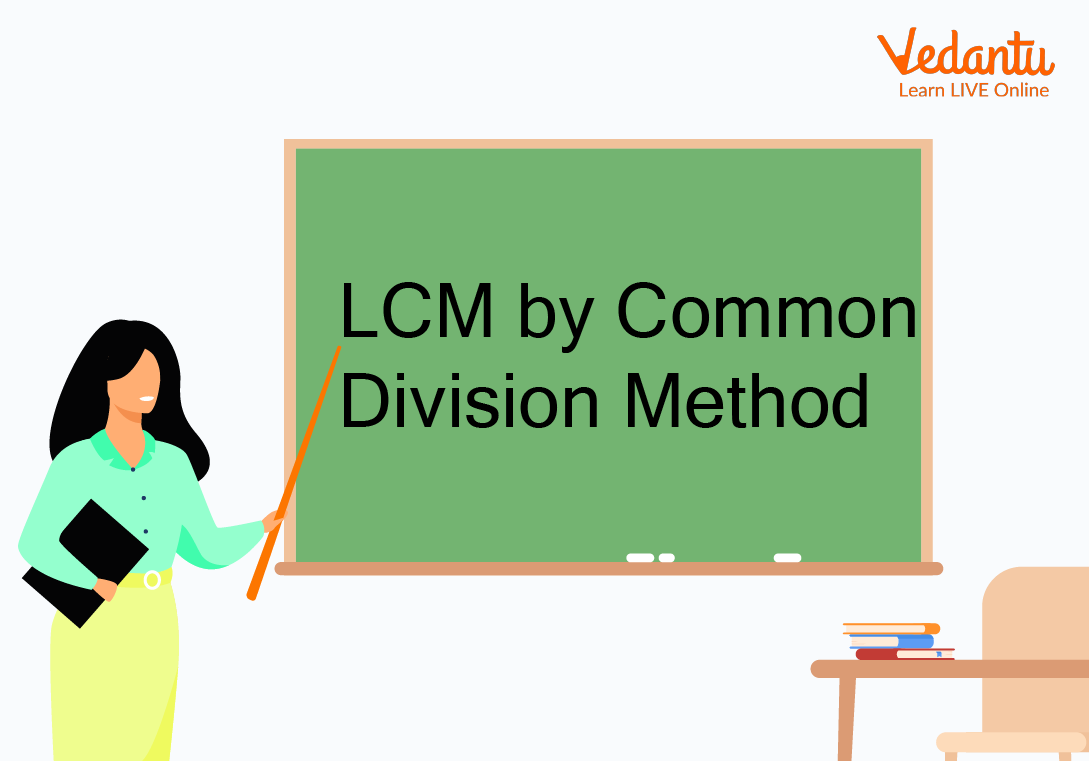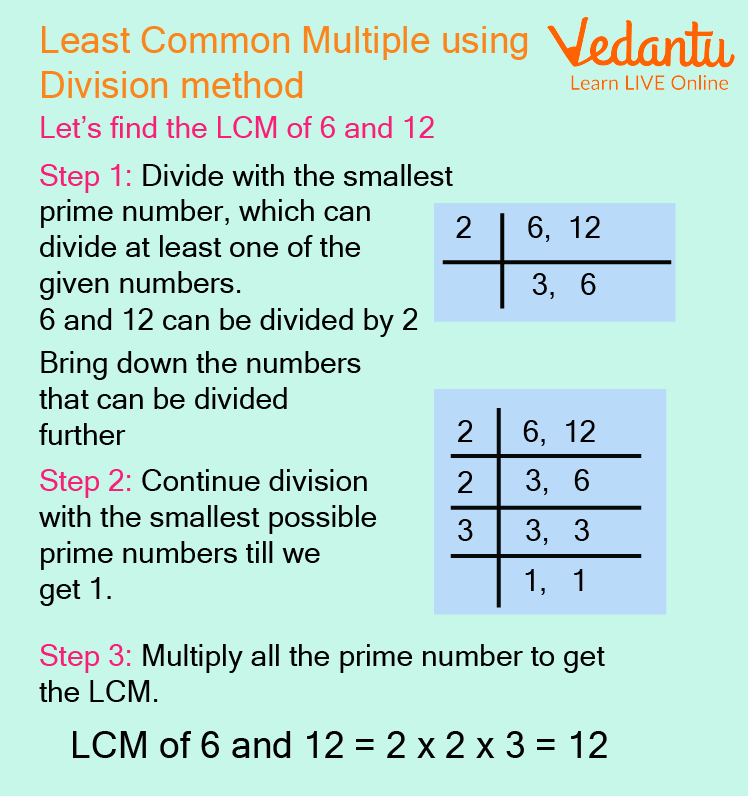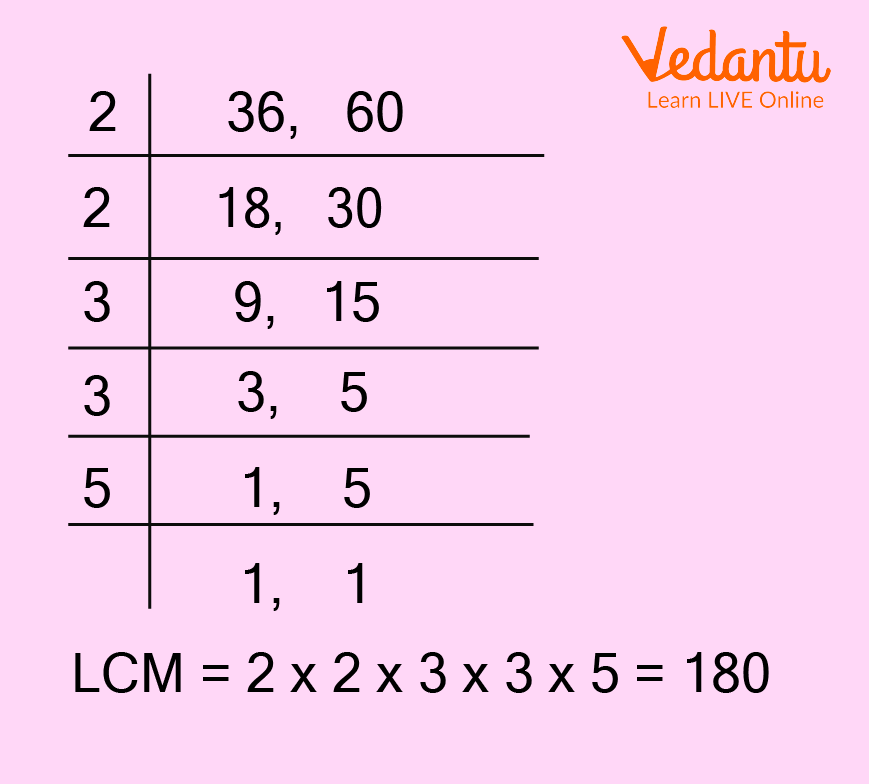




Stepwise Guide to Finding LCM for Any Set of Numbers
We first need to understand what is LCM (Least common multiple)? Why is it used? It is the lowest number that is completely divisible by each of the given numbers. LCM stands for "Least Common Multiple" which is the smallest positive integer that is a multiple of two or more integers added together. We can find the L.C.M of two or more numbers using three methods. In this article, we will dive into the basics of the LCM method and understand how to find LCM and represent it.

Full Form of LCM
How to Find LCM by Listing Method
We can find out the common multiples of two or more numbers. Out of these repeated multiples, the LCM of two numbers can be calculated.
Steps to calculate LCM by listing method:
List the initial range of each number's multiples.
Search for multiples that appear on all number lists. Write out additional multiples for each number if there aren't any common multiples in the lists.
Find the least quantity that appears on both lists.
This is the LCM number.
Let’s take the LCM method example for the above method:
Example: Find the LCM of numbers 4 and 5 by listing methods.
Ans: LCM of 4 and 5 by the listing method:
Multiples of 4: 4, 8, 12, 16, 20, 24, 28, 32, 36, 40, ..
Multiples of 5: 5, 10, 15, 20, 25, 30, 35, 40, …
So Common Multiples are: 20, 40, …
according to the least method, the LCM of 4 and 5 is 20.
How to Find LCM by Prime Factorisation Method
Using the prime factorization method, we can find out the prime factors of the numbers.
Steps to be followed to calculate the LCM by the prime factors method is:
Step 1: Finding each number's prime factorization is the first step in computing the LCM using the prime factors approach.
Step 2: When you write each number as a product of primes.
Step 3: Now take the highest power of each prime number.
Step 4: To obtain the LCM, multiply the prime numbers.
Let’s take the LCM method example for the above method:
Example: Calculate the LCM of 50 and 100.
Ans: Steps to be followed to calculate LCM are:
Finding each number's prime factorization:
$50: 2 \times 5 \times 5$
$100: 2 \times 2 \times 5 \times 5$
When you write each number as a product of primes.
$50: 2 \times 5 \times 5$
$100: 2 \times 2 \times 5 \times 5$
Now take the highest power of each prime number. Here the highest power of 2 and 5 is 2. Therefore,
$2 \times 2 \times 5 \times 5$
To obtain the LCM, multiply the numbers
Multiplying $2 \times 2 \times 5 \times 5=100$
How to Find LCM by Division Method

LCM by Standard Division Method
To calculate the LCM of two numbers using the division method, we have to follow the steps given below:
Step 1: To find the LCM by division method, we write the given numbers in a row separately by commas, then divide the numbers by a common prime number. Find a prime number of a factor of at least one of the given numbers. Put this prime number to the left of the given numbers.
Step 2: We stop dividing after reaching the prime numbers. The product of common and uncommon prime factors is the LCM of given numbers. (It means if the prime number in step 1 is a factor of the number, divide the number by the prime and write the quotient below. If the prime number in step 1 is not a factor of the number, write the number in the row below as it is. Continue the steps until only one is left in the last row.)
Let’s take the LCM method example for the above method:
Examples: Find the least common multiple (LCM) of 6 and 12 using the division method.
Ans: Step-by-step explanation to solve LCM by the common division method is given below:

Step-by-Step Explanation to Solve LCM by Common Division Method
Solved Examples
Q1. Find the least common multiple (LCM) of 36 and 60 using the division method.
Ans: Step-by-step explanation to solve LCM by the common division method is given below:

LCM by Division Method
LCM of 36 and 60 is 2 ×2 × 3 × 3 × 5 = 180
Q2. What is the least common multiple of 980 and 9000 using the prime factorization method?
Ans: Steps to find LCM
Find the prime factorization of 980
980 = 2 × 2 × 5 × 7 × 7
Find the prime factorization of 9000
9000 = 2 × 2 × 2 × 3 × 3 × 5 × 5 × 5
Multiply each factor the greater number of times it occurs in steps i) or ii) above to find the LCM:
LCM = 2 × 2 × 2 × 3 × 3 × 5 × 5 × 5 × 7 × 7
LCM = 441000
Practice Questions:
Q1. Find the LCM of 4, 8, and 16 by using the listing method.
Ans: 16
Q2. Find the LCM of 14 and 16.
Ans: 112
Q3. Find the LCM using the prime factors method: 60 and 72.
Ans: 360
Q4. Find the least common multiple (LCM) using the division method of: 9, 12 and 36
Ans: 36
Summary
Learning about LCM can be helpful when trying to solve problems or puzzles. For example, if we have three numbers and want to find the smallest number that is a multiple of both of those numbers, we would use the LCM method. In this article, we learned about the Least Common Multiple (LCM) and how it can be used to simplify multiple problems. We also explored three methods for finding LCM, and explained how to solve it. Now that you have a better understanding of what LCM is and why it's important, continue learning more about this intriguing number in future articles!
FAQs on How to Take LCM: Methods, Steps, and Easy Examples
1. How to do LCM step by step?
To find the LCM step by step, follow these steps:
- List the prime factors of each number.
- Identify all unique primes.
- Take the highest power of each prime.
- Multiply these together.
2. What is the LCM of 24 and 36?
The LCM of 24 and 36 is 72. Find the LCM by breaking each number into prime factors and then using every prime the maximum number of times it appears. For 24 ($2^3 \times 3$) and 36 ($2^2 \times 3^2$), LCM = $2^3 \times 3^2 = 72$.
3. Is there a fast way to find LCM?
Yes, a fast way to find LCM for two numbers is to use this formula:
$\mathrm{LCM}(a,b) = \frac{a \times b}{\mathrm{GCD}(a,b)}$.
Find the greatest common divisor (GCD), then divide the product of the numbers by their GCD.
4. How to find LCM of 2, 3, 4, 5, 6, 7?
To find the LCM of 2, 3, 4, 5, 6, and 7:
- List their highest prime factors: $2^2, 3, 5, 7$
- Multiply: $2^2 \times 3 \times 5 \times 7 = 420$
5. What does LCM stand for in math?
In mathematics, LCM stands for Least Common Multiple. This is the smallest positive number that two or more integers divide exactly. The LCM is useful for solving problems with fractions, ratios, or arranging items in groups evenly.
6. Why is finding LCM important?
Finding the LCM is important in math because it helps:
- Add or subtract fractions with different denominators
- Arrange items equally
- Solve problems involving repeating events or cycles
7. How to find LCM using prime factorization?
To find LCM using prime factorization, break each number into its prime factors. Then, for each prime, select the highest exponent found. Multiply those primes together to get the least common multiple. This method ensures you include all required factors.
8. Can LCM be smaller than both numbers?
The LCM can never be smaller than either number. By definition, the least common multiple is always equal to or greater than the largest number in the set, since it must be exactly divisible by all numbers involved.
9. What is the difference between LCM and GCD?
The LCM is the smallest common multiple of two or more numbers, while GCD (Greatest Common Divisor) is the largest number that divides all numbers exactly. LCM finds a multiple; GCD finds a divisor. Both are useful for solving different math problems.
10. Can you use LCM for more than two numbers?
Yes, you can use the LCM concept for any set of numbers. Find the prime factorization for all numbers, pick each prime's highest power present, and multiply them together. This gives the least common multiple of all numbers, not just two.
11. When do you need to use LCM in real life?
You need LCM in real life when:
- Scheduling events that repeat at different intervals
- Arranging multiple groups equally
- Working with fractions of different denominators





















